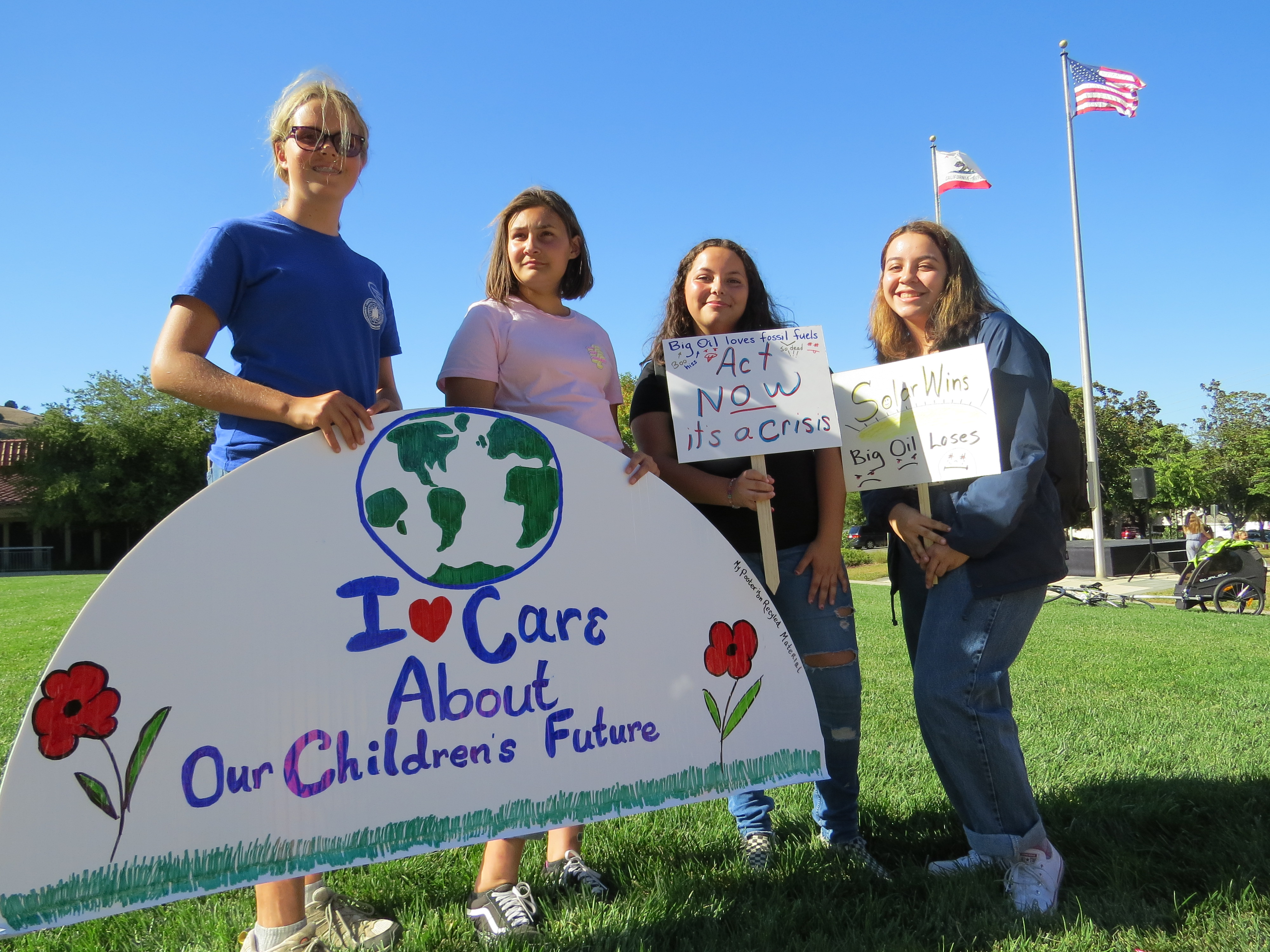The water you see in the brimming reservoirs is not used directly

Photo by Marty Cheek
From left to right, students Nicki Kantor and Riley Barela, of San Martin Gwinn; and Sofia Ramirez and Bella Ramirez, of Sobrato High School at the Sept. 20, 2019, rally for climate change action at the Morgan Hill City Hall Plaza.
By Lesley Miles

Our individual decisions and actions ripple across the world in surprising ways. I just learned that 50 percent of the oil pumped in the Amazon is consumed in California and that the Amazon rainforest may be at a tipping point. More than 15 percent of this biosphere, the lungs of the world, has been slashed and burned creating grasslands for agriculture and to raise cattle.
Ancient hardwoods such as Ipe and mahogany are harvested from the Amazon and used locally in our homes as decks and flooring and may be touted as sustainably harvested, but we are pushing the forest to extinction. Even tiny changes in temperature and rainfall affect the rainforest and will have dire consequences.
How does that affect us here and what and how can we effect change here in our community as well as across the world.
As we weigh the impacts of our actions on the environment and climate change, let’s think about the past few years.
Last year at this time we had no rain at all. It is typically our rainiest month. I track these things because, as an architect working on public projects, we add rain days into the construction contract. At each meeting, we discuss how many rain days were used. It used to be four to six for December and January and five to seven for February, typically our rainiest months. I remember the first time that there was no rain in November and December and we were happy, the project was able to move quickly. But what does this portend?
Who anticipated the torrential rains and feet of snow this year? As far as I can see, no one. When the first rain hit in early November, it felt like rain in the past, rain when I was growing up, cold and predictable.

Which brings me to what will be the effect of climate change on our communities? The jury is out. An apocalyptic event?
Today, as I drove my gas guzzling pickup truck, I thought about the rainforest and the impact I am having on that delicate ecosystem. I wondered if the gas I was using was from oil extracted from the Amazon. What I do know is that when I plug in my electric car, it is tapping into renewable energy, Silicon Valley Clean Energy, our Morgan Hill energy provider. I am lucky, I can make a choice to drive my plug in and leave the truck at home.
Locally, millions of gallons of rain water washed away during the atmospheric rivers to the ocean instead of remaining and gently percolating into our aquifers.

Think about our actions on the planet as a whole because, even though we think that the forests are far away, the impact of our actions is returning to us. And, we truly have no idea how this will play out.
Lesley L. Miles (AIA, LEED AP) is a principal at Weston Miles Architects in Morgan Hill.








